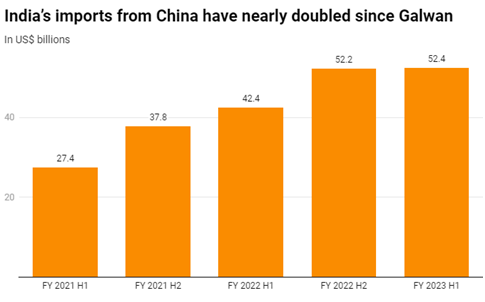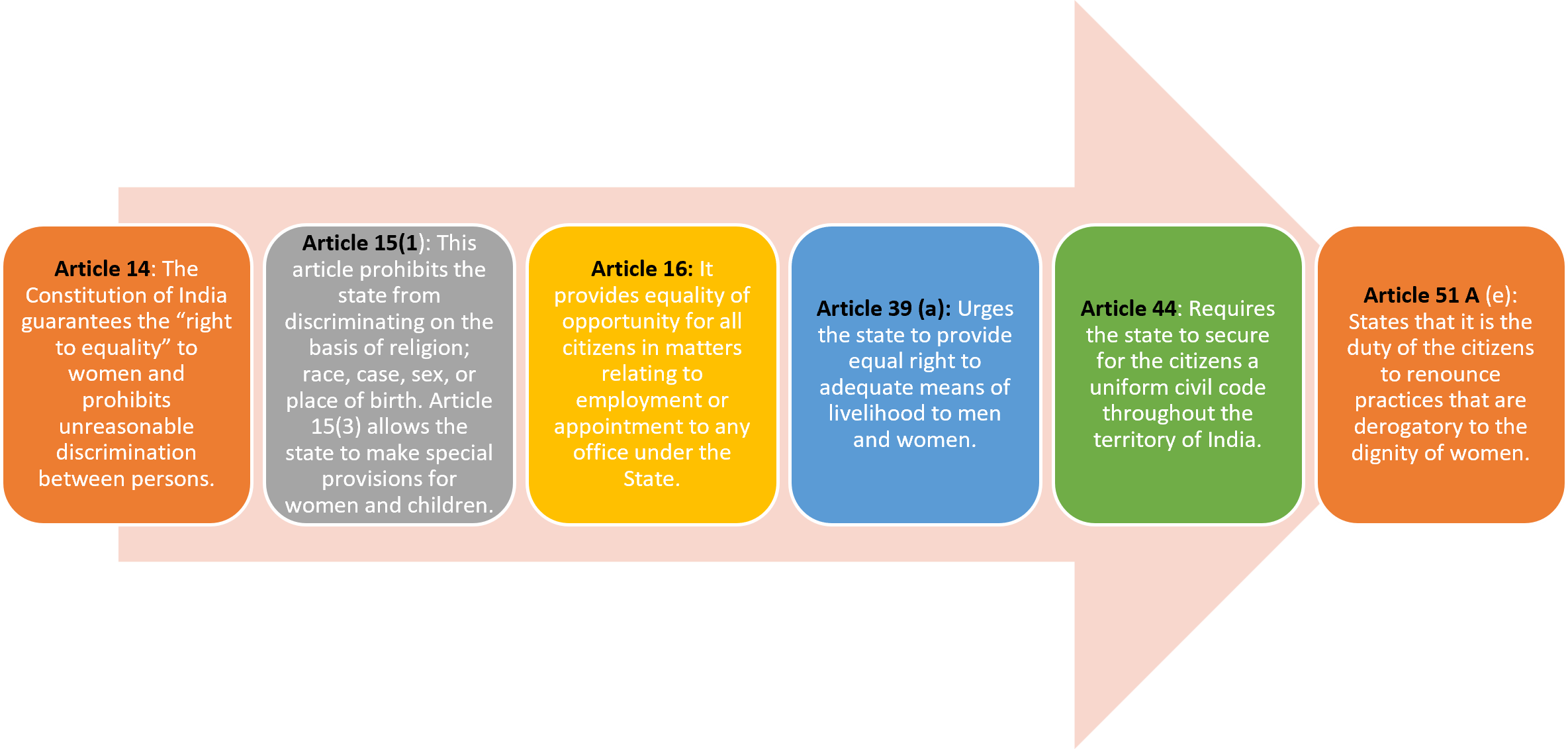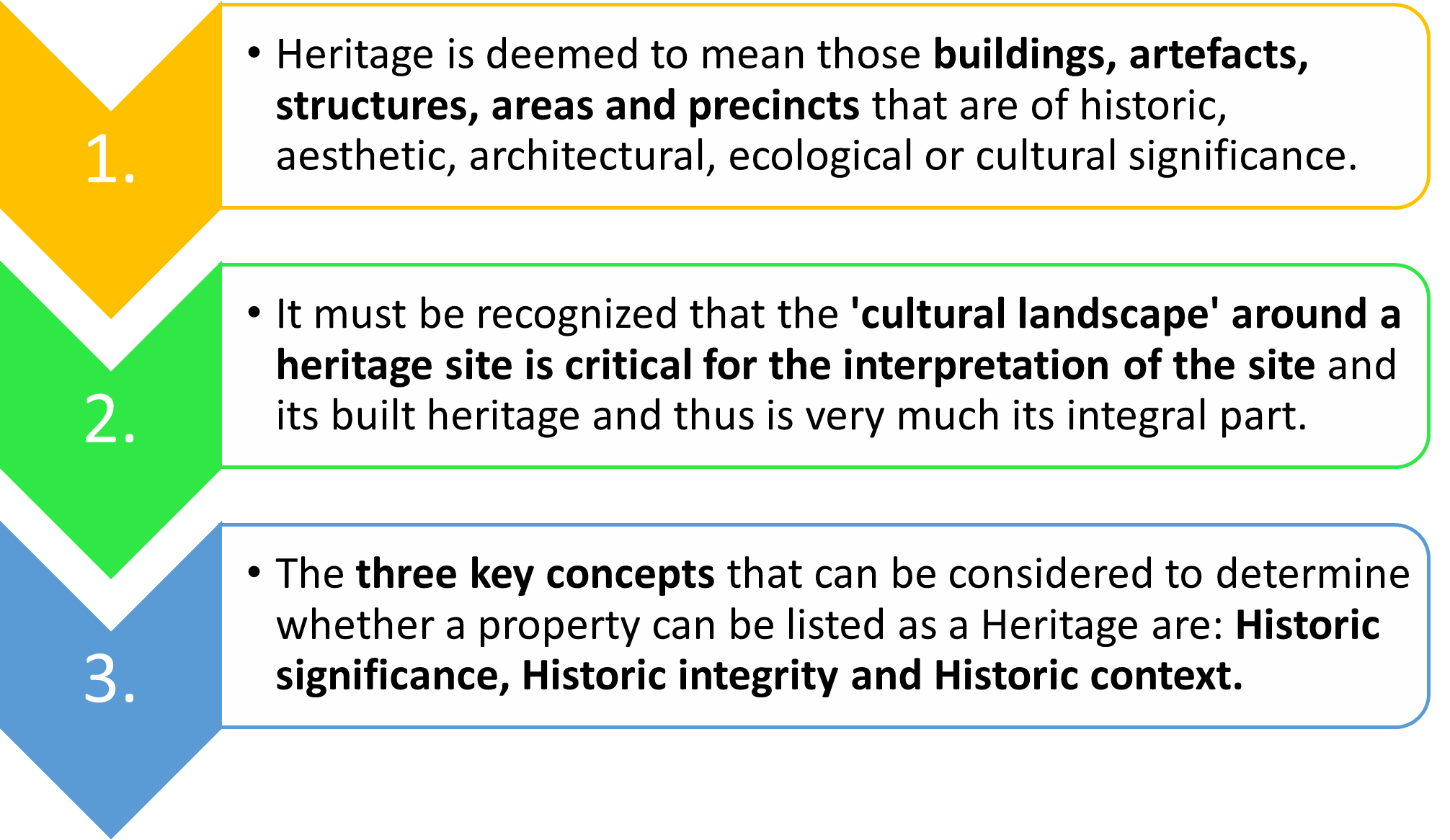Friday, 16th December 2022
EAGLE Act and Indian immigrants
In news
The US Congress has passed a legislation, the Equal Access to Green cards for Legal Employment (EAGLE) Act, 2021 to eliminate the per-country quota on issuing green cards.
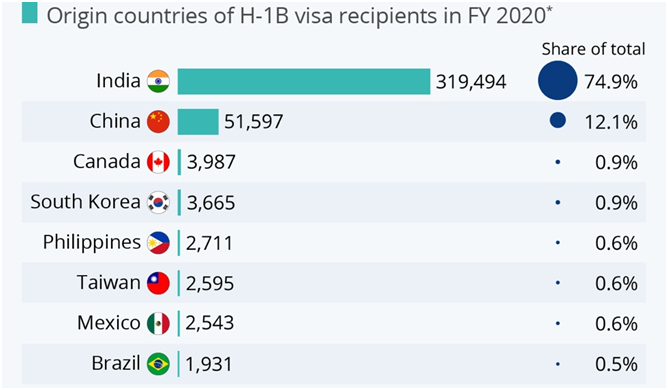 About Green Cards and Indian immigrants
About Green Cards and Indian immigrants
- Green cards, officially known as Permanent Resident Card, issued to immigrants, allows them to live and work in the United States on a permanent basis.
- The green card provides easy access to US social security system, and education assistance and travel to and from the country becomes much easier. A cardholder can choose to live anywhere in the US and there is more freedom in terms of career opportunities as one can apply for a wide variety of jobs
- High-skilled foreign workers in the US are H1-B visa holders which allows them to live and work in the country for a maximum of six years. Within these six years, they must find an employer willing to file an employment-based green card application on their behalf.
- With around 75% of H1-B visas granted to India-born high-tech professionals each year, the 7 per cent country cap over Green cards has created a massive backlog of 1.2 million people in 2020.
- The US had about 4 million employment‐based immigration cases were resolved through its permanent residence process in 2021. Nearly 82 per cent of the employment‐based backlog was for Indians.
- The reason for the longer queue for those born in India is thatUS imports a far-higher number of skilled Indian professionals each year than the number of green cards it can offer.
What is the EAGLE Act aka H.R. 3648?
- The act seeks to phase out the seven per cent per-country limit and raises it to 15 per cent, on employment-based immigrant visas.
- To reduce the impact of this legislation on less-populated countries and ensure that eligible immigrants from these countries are not excluded when the Act is implemented, it provides for a nine-year period for phasing out of this limit.
- The aim of the act is to focus on hiring immigrants based on merit, not their birthplace, by eliminating the “per country” limitation on employment-based immigrant visas (green cards).
How will the act benefit Indian immigrants?
- The legislation would reduce the backlogs on the processing of hold Green cards of skilled Indian workers which touched a million in 2020.
- The mismatch between H1B visas granted to skilled Indians i.e. 75% and number of employment‐based green cards issued i.e. 7% per country would be resolved to an extent. Still it would take a wait of around a decade for every employer‐sponsored immigrant.
- The increased issuance of green card would remove the uncertainty of being uprooted from the country if immigrants face job losses.
- The bill will also enable individuals who have been waiting in the immigrant visa backlog for two years to file their green card applications.
Source:
https://indianexpress.com/article/explained/explained-global/us-govts-eagle-act-indian-immigrants-8327037/
Crisis in Bangladesh's economy
In News:
- Bangladesh reaches out to the IMF for help with its economic recovery
About the News:
- Bangladesh has recently reached out to International Monetary Fund (IMF) for economic assistance to support its economy.

- War in Ukraine has badly hit its exports as demand has fallen in the West, badly hitting Bangladesh’s forex reserves.
- This is a dramatic reversal for an economy which overtook India in terms of per capita income in 2020.
- Economists from different quarters have suggested reforms to improve situation aimed at addressing structural issues to accelerate growth, attract private investment, enhance productivity, and build climate resilience.
Major issues with Bangladesh’s economy:
- Contraction: Economic recovery in Bangladesh from the pandemic has been interrupted by Russia’s war in Ukraine and cascading impacts of climate change.
- Spike in inflation: The prices of commodities in the country has spiked to uncomfortable levels as all kinds of commodities such as crude oil became costlier.
- Deficit: The current account balance of Bangladesh has gone deep into a deficit — both in absolute terms as well as a percentage of the GDP.
- Export dependence: Bangladesh has typically been hugely dependent on its export earnings, thus, with slowing down of western economies, its exports have suffered tremendously.
- Currency depreciation: The currency of countrye., Taka has weakened partly under the pressure of the surge in the US dollar and partly on account of the worsening current account deficit.
- Dwindling reserves: The weakness in the external front has resulted in Bangladesh’s foreign exchange reserves getting depleted more than one-fourth of its total valuation.
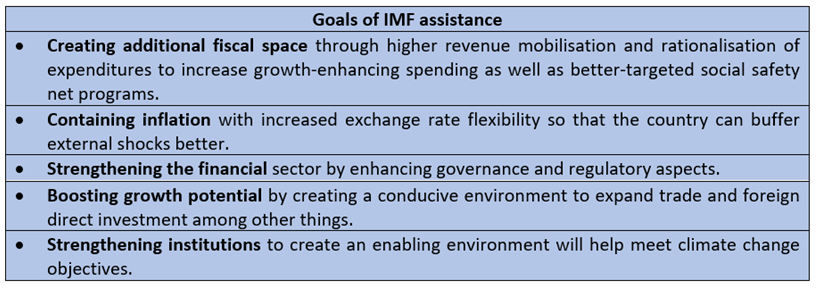
Source:
https://indianexpress.com/article/explained/explained-economics/bangladesh-economy-imf-funds-explained-8325697/
https://www.scribd.com/document/424681760/ASSIGNMENT-ON-WORKING-OF-IMF
Sardar Patel and his supreme national interest
Why in news?

- Recently, Prime Minister on December 15 paid homage to Sardar Vallabhbhai Patel on his 72nd death anniversary and recalled the everlasting contribution of the ‘Iron Man’ to India.
|
About Sardar Vallabhbhai Patel (1875-1950)
|
Key Points
- He was the First Home Ministerand Deputy Prime Minister of India.
- He played a major role in integrating about 565 princely states into the Indian Union.
- He had a vision of uniting people (Ek Bharat)in order to create a foremost India (Shresth Bharat).
- He was the Head various Committees of the Constituent Assembly of India, such as:
- Advisory Committee on Fundamental Rights.
- Committee on Minorities and Tribal and Excluded Areas.
- Provincial Constitution Committee.
- He became regarded as one of the "No-changers," a group of individuals who resisted membership in legislative councils, along with Rajendra Prasad, C. Rajagopalachari, and M.A. Ansari.
- During the Gaya session in December 1922, the Swarajists were defeated (Pro-changers or who favoured the council-entry move).
- He presided over the Karachi session of the Indian National Congress in March 1931.
- He also participated in Salt Satyagraha (1930), Civil Disobedience (1930), Quit India Movement (1942) and played an important role in the Mutiny of the Royal Indian Navy (RIN) of February 1946 by counselling the participants.
- He oversaw Operation Polo, the police operation used to annex the former state of Hyderabad into the Indian state, in September 1948.
- He was the Chief Architect of India's Steel frame, i.e., the civil services in India.
- The National Police Academy is named after him.
Reforms
- He worked with dedication against untouchability, caste discrimination, woman issues and alcohol consumption.
- He worked for the farmer’s cause in Kheda Satyagraha (1918) and Bardoli Satyagraha (1928) Satyagraha (1928) with the national freedom movement.
Titles
- The title ‘Sardar’ was bestowed upon him by women of Bardoli, which means ‘a Chief or a Leader’.
- He established the modern all-India services system, thus also known as ‘Patron Saint of India’s Civil Servants’.
- He is also known as the "Iron Man of India" because he was instrumental in bringing together and integrating the princely states of India into the Indian federation and in persuading them to support the Indian Union.
Death:
- 15thDecember 1950 (Bombay)
- In 1991, he was posthumously awarded Bharat Ratna, the highest civilian award of India.
Government Initiatives to honour him :
- Statue of Unity:
- Tallest statue of the world(182 m)
- Location: Kevadiya in the Narmada district of Gujarat.
- Sardar Patel National Unity Award:
- It is the highest civilian awardin the field of contribution to the unity and integrity of India.
Content Source Link:
https://theprint.in/india/pm-pays-tribute-to-iron-man-of-india-on-his-death-anniversary/1266448/
https://indianexpress.com/article/explained/explained-politics/sardar-patel-always-held-national-interest-as-supreme-8326695/
Air Pollution in India Requires South Asia Action: WB Report
In news
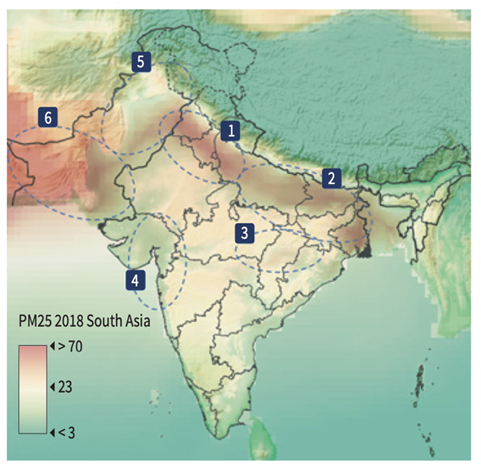 The report titled 'Striving for Clean Air: Air Pollution and Public Health in South Asia' by the World Bank made public recently says that, while existing measures by the Indian government can reduce particulate matter, significant reduction is possible only if the territories spanning the airsheds implement coordinated policies.
The report titled 'Striving for Clean Air: Air Pollution and Public Health in South Asia' by the World Bank made public recently says that, while existing measures by the Indian government can reduce particulate matter, significant reduction is possible only if the territories spanning the airsheds implement coordinated policies.
About Report findings
- India has six large airsheds, of which some of which are shared with Pakistan, between which air pollutants move.
- Currently,over 60% of South Asians are exposed to an average 35 µg/m3 of PM2.5 annually.
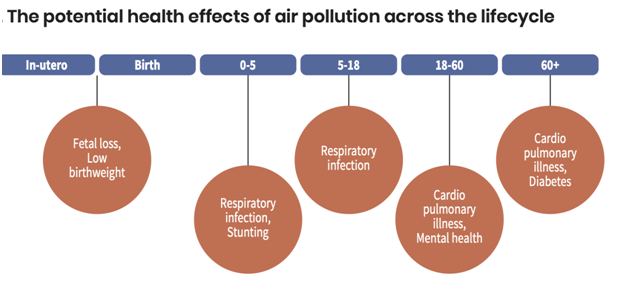
- When the wind direction was predominantly northwest to the southeast, 30% of the air pollution in Indian Punjab came from the Punjab Province in Pakistan.
- What this means is that even if Delhi National Capital Territory were to fully implement all air pollution control measures by 2030, while other parts of South Asia continued to follow current policies, it wouldn’t keep pollution exposure below 35 µg/m3.
- Exposure to such extreme air pollution has impacts ranging from stunting and reduced cognitive development in children, to respiratory infections and chronic and debilitating diseases, thereby driving up healthcare costs.
- Along with dominant sources like Large industries, powerplants and vehicles, other substantial sources include:
- combustion of solid fuels for cooking and heating
- emissions from small industries such as brick kilns
- burning of municipal and agricultural waste, and cremation.
- Recommendations in the report
- The report calls for full coordination between airsheds, which would cut the average exposure of PM 2.5 in South Asia to 30 µg/m³ at a cost of $278 million (₹2,400 crore) per µg/mᶾ of reduced exposure, thereby saving more than 7,50,000 lives annually.

-
- Accounting for the interdependence in air quality within airsheds in South Asia is necessary when weighing alternative pathways for pollution control.
- Hence, Regional cooperation can help implement cost-effective joint strategies that leverage the interdependent nature of air quality.
- Economic incentives fine tuned to enable private-sector solutions, to address distributional impacts, and to exploit synergies with climate change policies.
Measures in India to reduce Air Pollution
- Government has notified National Ambient Air Quality Standards (NAAQS) for 12 pollutants in 2009 to protect public health and environment from air pollution.
- The National Clean Air Campaign (NCAP) has been launched in 2019, to reduce air pollution in 131 of India’s most polluted cities. The target was initially to cut pollution by 20%-30% by 2024 over 2017 levels but has now been revised to cutting it by 40% by 2025-26.
- National Knowledge Network of leading academic institutions in States have been constituted to facilitate exchange of technical knowhow on air quality management.
- Leapfrogging from BS-IV to BS-VI standards.
- Regulating the bursting of pollution-emitting crackers, and promoting Green Crackers.
Source
Striving for Clean Air
Curbing air pollution in India needs efforts across South Asia: World Bank report
Image source
https://documents1.worldbank.org/curated/en/099030312132233780/pdf/P1682370b4ac4a0270ac2702e1cfb704198.pdf
Hooch - Edukemy Current Affairs
- Context: The death toll from the Chapra hooch tragedy has touched 39.
- Hooch is a commonly used term for poor-quality Alcohol.

- Unlike branded liquor which is produced in factories with sophisticated equipment and rigorous quality control, hooch is made in more crude settings without any quality checks.
- Alcohol if prepared incorrectly, can kill and it is nearly impossible to confirm if hooch is safe to consume before actual consumption as there is an inherent risk associated with the crude methods of production that hooch-makers employ.
- The fermented mixture which is distilled crudely contains consumable alcohol (ethanol) and methanol, a different form of alcohol which is highly toxic for human beings.
- Often, various adulterants are also added to increase the potency of the liquor, like organic waste, battery acid, and industry-grade methanol, all of which are highly toxic.
- Methanol or methyl alcohol can cause impaired vision, high toxicity and metabolic acidosis, a condition in which the body produces excessive acid that cannot be flushed out by the kidneys.
Sources:
https://indianexpress.com/article/explained/tragedy-waiting-to-happen-why-can-hooch-be-so-deadly8327066/
Image Source:
https://www.outlookindia.com/national/hooch-tragedies-five-recent-incidents-of-people-dying-due-to-consumption-of-spurious-liquor-news-212209
Old Pension Scheme vs New Pension Scheme
- Context: Recently several states have started to demand reversal of pension scheme from new to old.
- Old Pension Scheme

-
- Upon retirement, employees receive 50 percent of their last drawn basic pay plus dearness allowance or their average earnings in the last ten months of service, whichever is more advantageous to them.
- A ten-year service requirement should be met by the employee.
- Retirement corpus building was not pressured.
- New Pension Scheme
-
- It allows beneficiaries to keep 60% of their investment once they retire.
- It was first made available by the Indian government in 2004.
|
OPS |
NPS |
|
Only govt employees can enroll.
|
Private sector employees can also participate in the NPS voluntarily.
|
|
An employee gets 50% of last drawn salary.
|
A person gets 60% in lump sum and 40% kept to be given monthly.
|
|
No tax is applicable on pension. |
60% is tax free while 40% is taxable. |
|
A person can switch to NPS. |
A person cannot switch to OPS. |
|
It is not a flexible scheme. |
It is a flexible scheme. |
- Pension Fund Regulatory and Development Authority (PFRDA) is regulating NPS, subscribed by employees of Govt. of India, State Governments and by employees of private institutions/organizations & unorganized sectors.
Source:
https://pib.gov.in/PressReleaseIframePage.aspx?PRID=1809086
https://www.livemint.com/news/india/new-pension-scheme-vs-old-pension-scheme-which-is-better-11664154597501.html
Empowering States: Uniform Civil Code Overview
- Context: Recently the Law Minister stated that the States are empowered to enact personal laws that decide issues such as succession, marriage and divorce, in their endeavour to secure a uniform civil code.
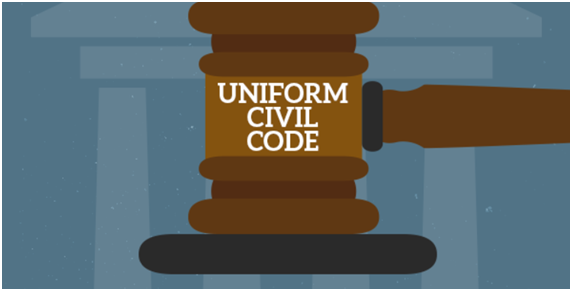
- UCC in simple terms means that there will be one law for the entire country, applicable to all religious communities in their personal matters including wills; joint family and partition; marriage, divorce and property succession.
- Article 44: It states that the State shall endeavor to secure UCC for Indian citizens throughout the Indian territory.
- The objective of Article 44 of the Directive Principles in the Indian Constitution was to address the discrimination against vulnerable groups and harmonise diverse cultural groups across the country.
- Article 14: Equality before the law and equal protection of the law.
- Article 25: Right to profess, practice and propagate religion.
- Indian laws do follow a uniform code in most civil matters such Transfer of Property Act 1882.
- There have been several amendments because personal laws fall under Entry 5 of List-III-Concurrent List of the Seventh Schedule to the Constitution and the States are also empowered to legislate upon them.
- Goa is the only state that follows UCC.
Source:
1. https://www.thehindu.com/news/national/states-can-enact-laws-on-uniform-civil-code-law-minister-kiren-rijiju-tells-rajya-sabha/article66267999.ece/amp/
2. https://www.business-standard.com/about/what-is-uniform-civil-code
Agni V Missile - Edukemy Current Affairs
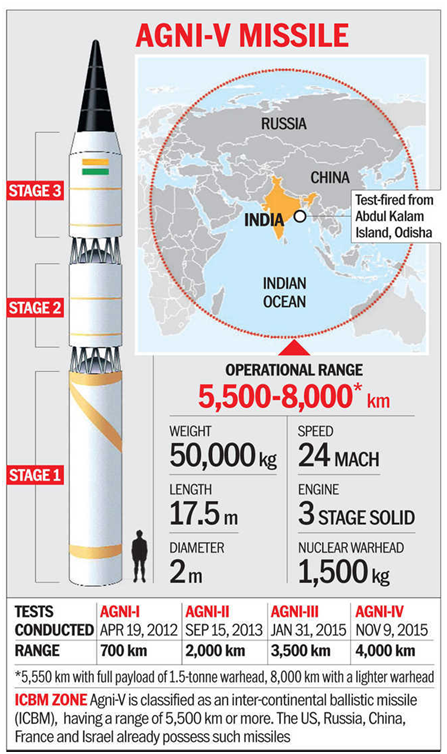
- Context: India on Thursday successfully carried out the night trials of the Agni-5 nuclear-capable ballistic missile, according to sources from the defense establishment.
- Agni-5 is an ingeniously built advanced surface-to-surface ballistic missile developed under the Integrated Guided Missile Development Programme (IGMDP), by DRDO.
- The test-firing of the missile was done from the Abdul Kalam Island off Odisha coast.
- It is a fire-and-forget missile, which cannot be stopped without an interceptor missile.
- The missile has the capability of hitting targets beyond the range of 5000 km and is crucial for India's self-defense systems.
- The trial was aimed at enhancing the range of the Agni-5 missile if required.
- The Integrated Guided Missile Development Programme (IGMDP) is aimed at making the country self-sufficient in the field of missile technology.
- The program had five missiles P-A-T-N-A, Prithvi, Agni, Trishul, Nag, and Akash.
Sources:
https://www.livemint.com/news/india/india-successfully-test-fires-agni-5-nuclear-capable-ballistic-missile-11671111082278.html
Image Source:
https://www.tribuneindia.com/news/archive/nation/india-s-most-potent-missile-agni-5-to-be-inducted-soon-613369
RTI Act - Edukemy Current Affairs
Why in news? Recently,the Former central information commissioner warned a possible threat to the right to information in the Data Protection Bill.
 About:
About:
- The Right to Information Act 2005 mandates timely response to citizen requests for government information.
- It aims to give people access to the records of the Central and State governments.
- Objectives of the Act:
- To empower the citizens
- To promote transparency and accountability
- To contain corruption and
- To enhance people’s participation in democratic process.
https://www.thehindu.com/opinion/op-ed/is-the-rti-act-fulfilling-its-purpose/article66266153.ece/amp/
RTI Amendment Act, 2019 - Edukemy Current Affairs
Why in news? Recently,The Central government has proposed amending the Right to Information (RTI) Act to protect individual privacy.
 About:
About:
- It provided that the Chief Information Commissioner (CIC) and an Information Commissioner (IC) (of Centre as well as States) shall hold office for such term as prescribed by the Central Government.
- It provided that the salary, allowances and other service conditions of CIC and IC (of Centre as well as States) shall be such as prescribed by the Central Government.
- It removed the provisions regarding deductions in salary due to pension or any other retirement benefits received by them for their previous government service.
https://www.thehindu.com/opinion/op-ed/is-the-rti-act-fulfilling-its-purpose/article66266153.ece/amp/
https://www.hindustantimes.com/india-news/data-bill-suggests-key-changes-to-rti-law-101668972203463.html
Central Information Commission (CIC)
Why in news? Recently,CIC pulled up the Prime Minister’s Office (PMO) for giving “no substantive/justifiable reason” for refusing to answer an appeal under the RTI Act.
About:

- Established: By the Central Government in 2005, not a constitutional body.
- Appointment: By the President on the recommendation of a committee.
- Tenure: Prescribed by the Central Government or until they attain the age of 65 years, whichever is earlier, not eligible for reappointment.
- Power and Functions of CIC:
- To receive and inquire into a complaint from any person under RTI, 2005.
- It can order an inquiry into any matter if there are reasonable grounds (suo-moto power).
- Powers of a civil court in respect of summoning, requiring documents etc.
https://www.thehindu.com/opinion/op-ed/is-the-rti-act-fulfilling-its-purpose/article66266153.ece/amp/
https://thewire.in/government/cic-pmo-denies-information-under-rti
WASH - Edukemy Current Affairs
Why in news? The world is not on track to achieve Sustainable Development Goal of water and sanitation for all by 2030.
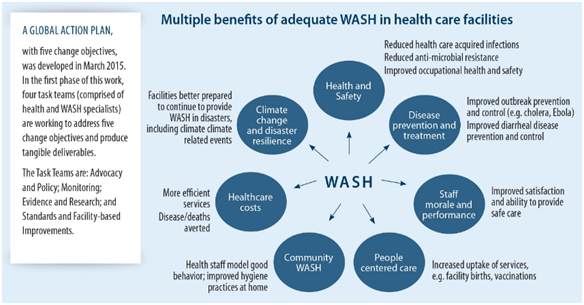 About:
About:
- WASH is an acronym that stands for "water, sanitation and hygiene".
- Universal, affordable and sustainable access to WASH is a key public health issue within international development.
- It is the focus of the first two targets of Sustainable Development Goal 6.
- The increasing frequency and intensity of climate-related extreme weather events continue to impact universal access to safe and sustainably WASH.
https://www.downtoearth.org.in/news/water/extreme-weather-events-continue-to-hamper-access-to-potable-water-sanitation-urgent-action-needed-who-86550
Rabi Crops - Edukemy Current Affairs
Why in news? Rabi crops are at risk due to an abnormal lack of western disturbances over northwest and central India.
 About:
About:
- These crops are sown around the Retreating Monsoon and Northeast monsoon season, which begins in October and are called rabi or winter crops.
- The harvest for these crops happens typically during April and May, during the summer season.
- These crops are not much affected by the rainfall.
- Major Rabi crops are wheat, gram, peas, barley
- A warm climate is required for seed germination and cold climate for the growth of crops.
https://www.downtoearth.org.in/news/natural-disasters/rabi-crops-at-risk-northwest-central-india-dry-due-to-lack-of-western-disturbances-86552
System for Pension Administration Raksha (SPARSH)
Why in news? Recently,The Defence Secretary has urged the stakeholders of SPARSH, to make it more user-friendly.
About:

- It is an integrated system for the automation of sanctions and disbursement of defence pensions.
- This web-based system processes pension claims and credits pensionsdirectly into the bank accounts of defence pensioners without relying on any external intermediary.
- Objectives:
- to provide last-mile connectivity to pensioners who may be unable to directly access the SPARSH portal.
- SPARSH has been designed to keep defence pensioners at the centre, who will be given a completely transparent view of their pension account.
https://www.pib.gov.in/PressReleasePage.aspx?PRID=1883516
Fading Non-Intervention: Reflections
Separation of Power- Tussle between Judiciary and Executive
In News: The President of India, Draupadi Murmu, and the Vice-President of India, Jagdeep Dhankhar, have weighed in on the surpassing significance of the separation of powers in the Indian Constitution. However, both did so in different ways, in substance and style.
The doctrine of separation of power signifies the division of different powers between various organs of the State, Executive, Legislature and Judiciary. It minimises the arbitrary excess by the government since the sanctions of all three branches are required for the making, executing and administering laws. The Doctrine is a part of the basic structure of the constitution although not specifically mentioned. Each organ is dependent on the other organ which checks and balances it.
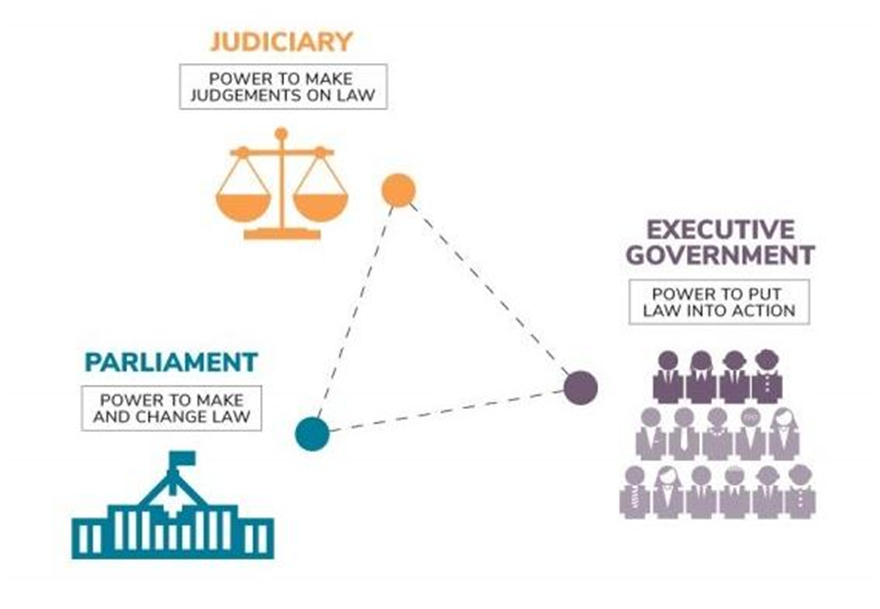
Other Incidence of tussle between Judiciary and Executive
- Fundamental Rights vs DPSP: The tussle between the judiciary and executive began when the judiciary defended the fundamental Rights in the Golak Nath Case,1967 against the supremacy of legislature (Parliament) established by the executive under the leadership of Mrs. Indira Gandhi, the Prime Minister of India.
- Shield of “Basic Structure”: Indira Gandhi in her next move got the three arbitrary constitutional Amendment Acts in 1971. The judiciary in response established the “Doctrine of Basic Structure‟ of the constitution through the Kesavanda Bharti case,1973.
- Struck down of NJAC: The NJAC judgment was a crucial turning point leading to the present confrontation. No doubt, there always has been a certain amount of creative tension but NJAC judgment became the tipping point.
- Struck down of tribunal ordinance: Supreme Court struck down the Tribunal Reforms (Rationalisation and Conditions of Service) Ordinance of 2021
- Displeasure over Delays in clearing recommendations of collegium: The Supreme Court expressed anguish over the delay by the Centre in clearing the names recommended by the Collegium for appointment as judges in the higher judiciary, saying it “effectively frustrates” the method of appointment.
Constitutional Provision:

Various Reasons for the tussle
- Wide range of powers: The power of the Indian Supreme Court is comparable to those of its United States counterpart, including broad original and appellate jurisdiction and the right to pass on the constitutionality of laws passed by the Parliament.
- Court’s FR vs State’s DPSP:The efforts by the court to give priority to the Fundamental Rights provisions in the constitution in a case where they have come into conflict with the Directive Principles, especially the broad ideological and policy goals of the Indian state and to which the executive and legislature have often given priority
- Power of judicial review: The court’s power of judicial review of legislation passed by Parliament, which has on numerous occasions led to stalemates that point to a constitutional contradiction between the principle of Parliamentary sovereignty and that of judicial review.
- The Collegium system: There is no mention of the collegium system either in the original constitution of India or successive amendments. From 1950 to 1973, the practice has been to appoint the senior most judge of the Supreme Court as Chief Justice of India. But the appointment and transfer of judges in the Supreme Court and High Courts became a matter of controversy between the judiciary and executive in 1973.
- Collegium System vs National Judicial Appointment Commission: The judiciary withheld the NJAC as unconstitutional and void. The Supreme Court objects to the inclusion of politicians in the NJAC particularly the two eminent members of the society.
- The decline of Parliament: Due to the failure of the executive and legislature to provide a solution to problems of the citizenry, citizens move to court for remedies.
The “tussle” between the executive/legislature and the judiciary is not a real one. On the other hand, a judiciary and executive on the same page is disastrous for constitutional government and human rights.
The problem is inbuilt into the institution. The executive has to ensure the judiciary that they have no intention of curbing their independence. Also, the judiciary should not be too touchy that every small little thing is a challenge to their independence. The tension between them is due to this confrontation.
https://www.thehindu.com/opinion/op-ed/reflections-on-the-fading-principle-of-non-intervention/article66268255.ece/amp/
IIT-Madras Invention: Ending Manual Scavenging
Background
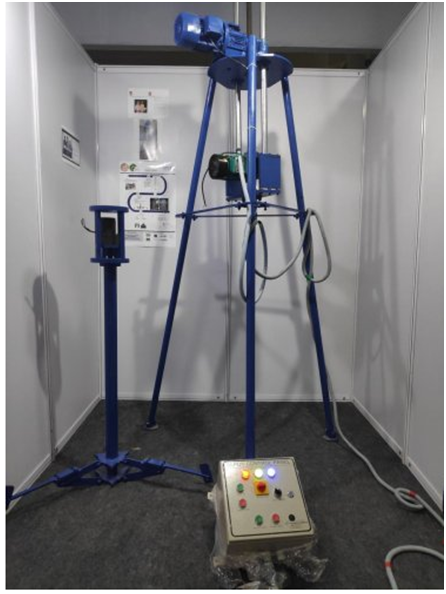 IIT Madras has developed a robot named HomoSEP which stands for “homogenizer of septic tanks”, with an aim to eliminate manual scavenging in India.
IIT Madras has developed a robot named HomoSEP which stands for “homogenizer of septic tanks”, with an aim to eliminate manual scavenging in India.
About HomoSep
- HomoSep is like an inverted umbrella that has a shaft attached to blades that can open when introduced into a septic tank.
- It can homogenize the hard sludge in septic tanks through a custom-developed rotary blade mechanism and pump the slurry using an integrated suction mechanism.
- The machine costs around Rs 20 lakh but has been made available to workers by non-profits. A total of ten robots are planned to be deployed across Tamil Nadu.
- Earlier, other drainage cleaning human-controlled robot i.e. Bandicoot was developed by Genrobotics, a Thiruvananthapuram-based start-up.
About Manual Scavenging:
- Manual scavenging is the practice of physically removing human excreta by hand from sewers or septic tanks in the country. The work is tied to India's caste structure, with so-called lower castes being expected to do this work.
- Despite the practice being banned in India under the Prohibition of Employment as Manual Scavengers and their Rehabilitation Act, 2013 (PEMSR), activist Bezwada Wilson from the SafaiKarmachariAndolan, mentions that 472 deaths because of manual scavenging had been recorded from 2016 to 2020.
Source:
https://www.firstpost.com/india/the-iit-madras-invention-that-could-put-an-end-to-manual-scavenging-in-india-10860341.html/amp
Share the article
Get Latest Updates on Offers, Event dates, and free Mentorship sessions.

Get in touch with our Expert Academic Counsellors 👋
FAQs
UPSC Daily Current Affairs focuses on learning current events on a daily basis. An aspirant needs to study regular and updated information about current events, news, and relevant topics that are important for UPSC aspirants. It covers national and international affairs, government policies, socio-economic issues, science and technology advancements, and more.
UPSC Daily Current Affairs provides aspirants with a concise and comprehensive overview of the latest happenings and developments across various fields. It helps aspirants stay updated with current affairs and provides them with valuable insights and analysis, which are essential for answering questions in the UPSC examinations. It enhances their knowledge, analytical skills, and ability to connect current affairs with the UPSC syllabus.
UPSC Daily Current Affairs covers a wide range of topics, including politics, economics, science and technology, environment, social issues, governance, international relations, and more. It offers news summaries, in-depth analyses, editorials, opinion pieces, and relevant study materials. It also provides practice questions and quizzes to help aspirants test their understanding of current affairs.
Edukemy's UPSC Daily Current Affairs can be accessed through:
- UPSC Daily Current Affairs can be accessed through Current Affairs tab at the top of the Main Page of Edukemy.
- Edukemy Mobile app: The Daily Current Affairs can also be access through Edukemy Mobile App.
- Social media: Follow Edukemy’s official social media accounts or pages that provide UPSC Daily Current Affairs updates, including Facebook, Twitter, or Telegram channels.

